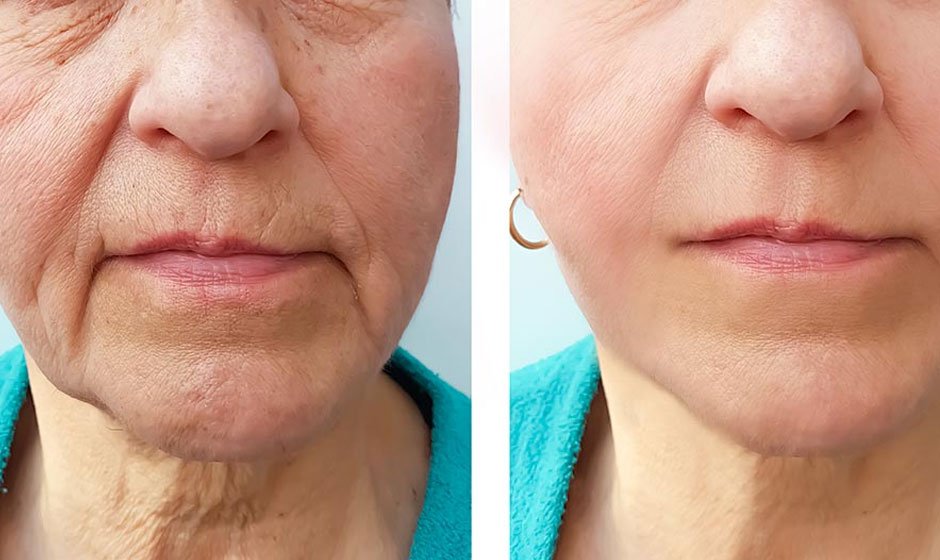Introduction
Marionette Lines Botox: What are marionette lines, and how can you effectively minimize their appearance? In this comprehensive guide, we’ll delve into the causes of marionette lines, explore various treatment options, discuss techniques to conceal them, and provide preventive measures. Discover the key to understanding and addressing marionette lines to achieve a more youthful appearance.
What Are Marionette Lines?
Marionette lines are facial wrinkles that commonly develop as a natural part of the aging process. These lines appear vertically between the corners of the mouth and the chin, often leading to sagging in the lower half of the face. The name “marionette lines” is derived from marionette string puppets, which feature split jaws allowing puppeteers to make them talk. The skin around the mouth is more prone to wrinkling due to its thinner nature compared to other facial areas.
Typically, marionette lines become more noticeable in one’s 40s, but signs of them may appear as early as the 20s or 30s. Understanding their causes and exploring treatment options can help minimize their visibility.
Causes of Marionette Lines
Marionette lines, like other facial wrinkles, result from the natural loss of collagen, a protein responsible for plumping the skin, as we age. Gravity also contributes to the sagging of the skin around the chin, making marionette lines more pronounced. Additionally, factors such as decreased skin elasticity, dehydration, long-term sun exposure, stress, and poor nutrition can accelerate the breakdown of collagen and elastin, leading to facial wrinkles.
While the precise causes of marionette lines in some individuals remain unclear, genetics are believed to play a role. It’s important to note that different people may develop various types of wrinkles, even though the underlying causes are similar.
Treatment Options for Marionette Lines
While marionette lines are a natural part of aging, several treatment options can temporarily reduce their appearance. It’s essential to note that surgical procedures are the only permanent solutions for removing wrinkles. However, there are non-surgical alternatives that offer longer-lasting results compared to others.
Surgical Procedures
- Facelift (Rhytidectomy): This major surgical procedure involves making incisions to remove or transfer fat and lift underlying tissues to tighten the face. A facelift is typically recommended when other non-surgical methods have been unsuccessful. Recovery from a facelift can take 1 to 2 weeks, and maintaining the results requires adopting healthy lifestyle habits.
- Partial Facelift (Mini Facelift): This less invasive procedure specifically targets marionette lines and may be recommended as a standalone treatment.
Non-surgical Procedures
- Laser Resurfacing: Laser treatments remove the top layers of skin using laser technology. While effective, laser resurfacing carries the risk of scarring and hyperpigmentation. Repeat treatments are often necessary every few months.
- Botox Injections: Botulinum toxin type A (Botox) injections are popular for reducing facial wrinkles around the mouth and eyes. Botox relaxes the facial muscles beneath the injection site, resulting in smoother skin with reduced wrinkles. Treatment with Botox needs to be repeated every 3 to 4 months.
- Dermal Fillers: Dermal fillers, such as those containing poly-L-lactic acid or hyaluronic acid, are temporary injectables used to plump the skin and smooth fine lines and wrinkles. Results from hyaluronic acid fillers are immediate, while poly-L-lactic acid fillers stimulate collagen production over time.
- Chemical Peels: Chemical peels, performed by aesthetic professionals, remove outer and middle layers of the skin to reduce wrinkles and age spots. Different types of peels may be recommended based on individual needs, and monthly treatments are often necessary to maintain results.
- Microneedling: Microneedling, or collagen induction therapy, involves creating small holes in the skin to stimulate collagen production. This procedure can help fill in deep marionette lines, but multiple treatments are typically required.
- Retinoids: Retinoids, available both over-the-counter and by prescription, are synthetic derivatives of vitamin A used to treat wrinkles, acne, and photoaging. They stimulate collagen production when applied beneath the skin’s surface.
- Hyaluronic Acid: Naturally present in the skin, hyaluronic acid diminishes with age. It can be found in dermal fillers, serums, and skincare products. Applying hyaluronic acid to wrinkles is believed to help smooth the skin.
Concealing Marionette Lines with Makeup
In addition to dermatological treatments, makeup can offer a temporary solution to conceal marionette lines. Here’s a step-by-step guide:
- Apply foundation as the base.
- After foundation, apply cream concealer to the marionette lines.
- Gently dab the concealer onto the skin using your ring finger or a concealer brush, ensuring it is absorbed. Avoid rubbing in the concealer.
- Set the makeup with a setting powder applied using a large makeup brush.
Focusing on eye makeup can also divert attention from the lower half of the face.
Preventive Measures for Marionette Lines
While it’s impossible to entirely prevent skin aging, certain measures can help slow down the development of marionette lines. Consider the following tips for maintaining healthy skin and preventing wrinkles:
- Daily Skincare: Establish a daily skincare routine that includes washing your face twice a day, removing makeup before bedtime, using anti-aging serums, and applying facial moisturizer to keep your skin hydrated.
- Weight Management: Gradually losing weight, if necessary, under medical supervision can help prevent sagging skin, including under the jawline, which can make marionette lines more noticeable.
- Reduce Sun Exposure: Protect your skin from the damaging effects of the sun by wearing SPF 30 sunscreen daily and using hats for added shade. Avoid direct sunlight during the peak hours when UV rays are strongest.
- Adopt a Skin-Friendly Diet: Eating a balanced diet rich in anti-inflammatory foods, such as colorful fruits and vegetables, fish, and unprocessed grains, can promote skin health in the long term.
- Lifestyle Considerations: Limit alcohol consumption, moderate caffeine intake, stay properly hydrated, avoid smoking, manage stress levels, and prioritize adequate sleep.
Conclusion
Marionette lines are a natural occurrence associated with aging. While they cannot be entirely prevented, understanding their causes and available treatment options can help minimize their appearance. Surgical procedures, such as facelifts, provide permanent solutions, while non-surgical alternatives like laser resurfacing, Botox injections, dermal fillers, chemical peels, microneedling, retinoids, hyaluronic acid, and makeup offer temporary relief. Additionally, adopting a proactive skincare routine and implementing preventive measures can help maintain healthier, youthful-looking skin. Consult with a dermatologist for personalized advice and long-term skincare recommendations. Embrace the beauty of aging gracefully with confidence!






